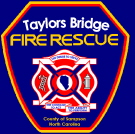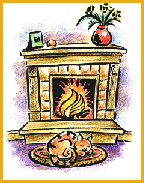 Home    Home Fireplace Safety Inside the Home Urban-Interface Areas Wood Shake and Shingled Roof Hazard |
Your
fireplace is a source of warmth and relaxation. Yet, like any home
appliance, it should be safe, properly maintained and good for the
environment, inside and out.
Think
Clean
Have
your fireplace inspected and cleaned annually by a National
Chimney Sweep Guild certified chimney sweep. A dirty fireplace can
cause chimney fires or contribute to air pollution. Your local National
Chimney Sweep Guild certified chimney sweep will diagnose your
fireplace and recommend what it needs in order to burn cleanly and
safely.
Choose the right fuel. In general, hardwood firewood (oak, hickory, ash, etc.) burns cleaner than soft wood (fir, pine, cedar, etc.). Independent tests have proven that manufactured fire logs burn much cleaner than firewood. Seasoned wood, wood with a moisture content of less than 20%, burns much cleaner than green (high moisture content) wood. Check with your cord wood supplier to make sure that the wood you purchase is seasoned. Burn smartly. Good fireplace habits can decrease fuel consumption in the home while maintaining the same level of warmth. Make sure the fire gets enough air to burn properly. Close the damper when the fire is out to keep warm room air inside. Minimize creosote buildup which causes chimney fires. Creosote is the black tarry or flaky substance formed in chimneys during the wood burning process. While firewood leaves flammable creosote and carbon deposits on chimney walls, tests show that manufactured fire logs leave significantly less creosote accumulation than wood. Make a fire that fits your fireplace. A fire that’s too large or too hot not only wastes fuel, it can crack your chimney. Check that your manufactured fire logs are UL – approved for use in zero-clearance manufactured metal fireplaces, making them suitable for use in all types of traditional open hearth fireplaces. Keep your fireplace in good working condition. If you notice any cracks in the chimney, any loose mortar or brick, have your chimney repaired. Have the chimney liner inspected for cracking or deterioration. Read and follow the label when using firelogs. Manufactured fire logs recommend that consumers use one fire log at a time, starting it with a match in a fireplace at room temperature. Don’t poke or break manufactured logs. This will cause them to crack apart, releasing their energy at a high rate and resulting in a shorter burn time. Fire logs perform best when burned on a supporting fireplace grate with a maximum of three to four inches of space between support bars. If your fireplace is equipped with glass doors, leave them open while burning a fire log to allow proper draught and cleaner burning. Once you’re sure the fire is extinguished, close the damper and glass doors to retain warm air inside the house. Remember
Clear the area around the fireplace and chimney. Debris too close to the fireplace could cause a fire. Check the flu for obstructions like birds’ nests and trim any overhanging branches or large trees near the chimney. Always use a fireplace screen. Never overload the fireplace with too many logs. Don’t use the fireplace as an incinerator and never burn garbage, Christmas trees or piles of paper. Keep a fire extinguisher on hand and place smoke detectors throughout the house. Test the smoke detectors and batteries regularly. See that the extinguisher is in good working order and that all family members know how to use it. When building a fire, place logs at the rear of the fireplace, preferably on a grate.Never leave fire unattended. Be sure the fire is extinguished before you go to bed. Keep wood stacked, covered, away from the house and off the ground. Bring in only as much as you need for one evening to prevent insects that may be in the wood from entering your home. Fire logs, which are packaged to eliminate insects and mess, can also prevent this problem. |
||||||